






Release time:2024-01-23 Browsed0 order
With the development of technology, the Internet of Things (IoT) has become an indispensable part of our lives. IoT refers to a network that connects, exchanges information, and communicates with any item through information sensing devices such as radio frequency identification, infrared sensors, global positioning systems, laser scanners, etc., in accordance with agreed protocols, to achieve intelligent identification, positioning, tracking, monitoring, and management. The architecture of the Internet of Things is usually divided into four layers: perception layer, network layer, platform layer, and application layer. This article will provide a detailed introduction to the composition and functions of these four layer architectures.
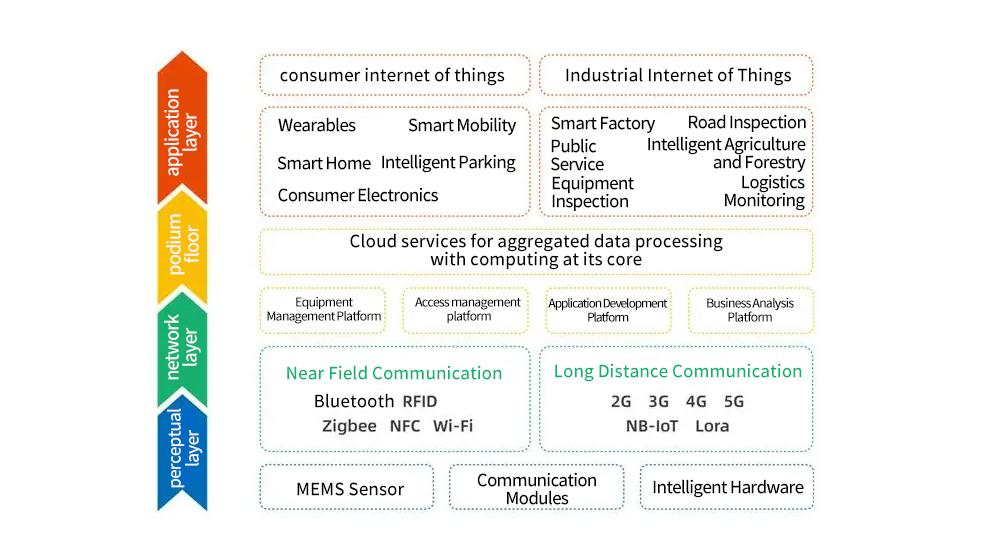
Perception layer
The perception layer, also known as the physical layer, is the lowest layer of IOT. The main task of this layer is to collect information from the environment through various sensors and devices, and convert this information into electronic data. These devices may include temperature sensors, humidity sensors, light sensors, pressure sensors, etc. In addition, this layer also includes various execution devices, such as motors, relays, etc., which can execute corresponding actions based on the received instructions.In the IOT system, the main task of the perception layer is to perceive and control the physical world. To complete this task, the perception layer needs to include the following key components:
Sensors: Sensors are devices used to perceive the physical world. They can detect various physical quantities, such as temperature, humidity, light, pressure, etc., and convert these physical quantities into electronic signals.
Executor: An actuator is a device used to control the physical world. They can perform corresponding actions based on the received electronic signals, such as switching on and off motors, adjusting light brightness, etc.
Controller: A controller is a device used to manage sensors and actuators. They can control the working status of sensors based on preset rules and algorithms, as well as control the actions of actuators based on sensor data.
Communication interface: A communication interface is a device used to connect the perception layer and the network layer. They can send data from the perception layer to the network layer, as well as send instructions from the network layer to the perception layer.
Network Transport Layer
The network layer is the second layer of IOT, responsible for transmitting the data collected by the perception layer to the data layer. This layer mainly includes various communication technologies and protocols, such as WiFi, Bluetooth, Zigbee, LoRaWAN, etc. These technologies and protocols need to be able to stably and reliably transmit data in various environments. In addition, the network layer also needs to handle various network issues, such as network congestion, data loss, data security, etc. In the IOT system, the main tasks of the network layer are data transmission and network management. To complete this task, the network layer needs to include the following key components:
Communication protocol: Communication protocol is used to specify the rules and formats for data transmission. They can ensure that data is transmitted correctly and effectively between different devices and networks.
Routers and switches: Routers and switches are devices used to manage network connections and data flow. They can correctly send data to the target device according to the communication protocol.
Network security devices: Network security devices are devices used to protect network and data security. They can prevent unauthorized access and attacks, protect the privacy and integrity of data.
Data platform layer
The platform layer is the third layer of IOT, responsible for storing, processing, and analyzing the collected data. This layer typically includes databases and data processing servers. Data processing may include steps such as data cleaning, data transformation, and data aggregation. In addition, this layer may also include various data analysis and mining tools for extracting valuable information and knowledge from the data. In the IOT system, the main tasks of the platform layer are data management and data analysis. To complete this task, the platform layer needs to include the following key components:
Database: A database is a device used to store data. They can ensure the persistence of data and support efficient data queries and updates.
Data processing server: A data processing server is a device used to process data. They can perform various data processing tasks, such as data cleaning, data transformation, data aggregation, etc.
Data analysis tools: Data analysis tools are software used to analyze data. They can extract valuable information and knowledge from data, supporting data-driven decision-making and operations.
Application layer
The application layer is the user interface of the IOT system, which provides an interface for users to interact with the system. The task of this layer is to present the results of the data layer to users in a way that is easy to understand and use. This may include various graphical user interfaces, reports, warnings, and notifications. In the IOT system, the main task of the application layer is to provide user interfaces and services. To complete this task, the application layer needs to include the following key components:
User interface: The user interface is the interface where users interact with the system. It can be a graphical user interface, a text user interface, or even a voice user interface. The user interface needs to be able to present data and services in an intuitive and user-friendly manner.
Service: A service is a function provided by the application layer. These services may include data queries, data analysis, device control, alarm notifications, etc. The service needs to be able to meet the needs of users and provide valuable features
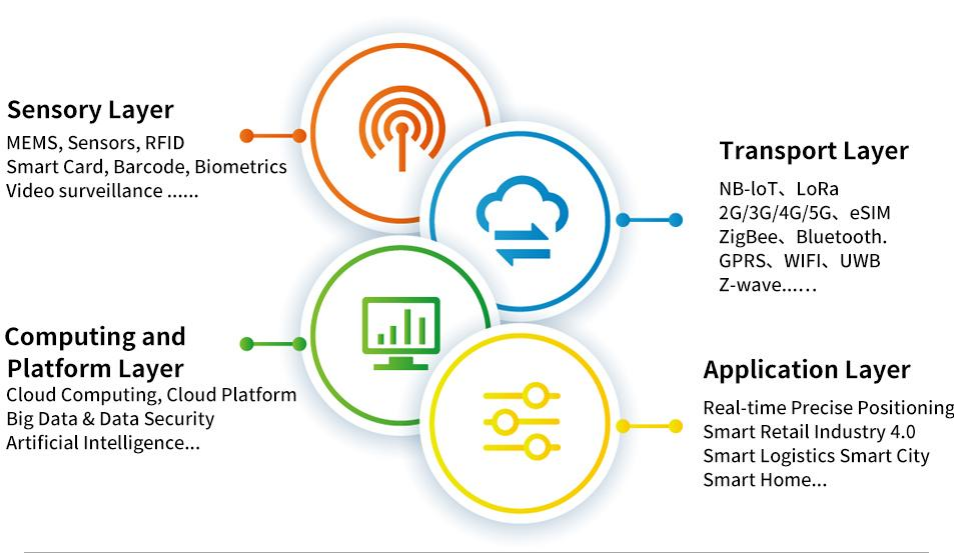
Example of IoT application using a 5-layer architecture
Smart home: In the perception layer, various sensors (such as temperature sensors, humidity sensors, lighting sensors, etc.) and devices (such as air conditioning, television, lighting equipment, etc.) collect environmental information. The network layer transmits data to the data layer through communication technologies such as WiFi or Bluetooth. The data layer processes and analyzes the collected data, such as determining whether indoor temperature or humidity needs to be adjusted. The application layer provides a user interface, such as a mobile app, allowing users to remotely control home devices. The business layer is responsible for integrating various functions, such as device management, user management, security management, etc.
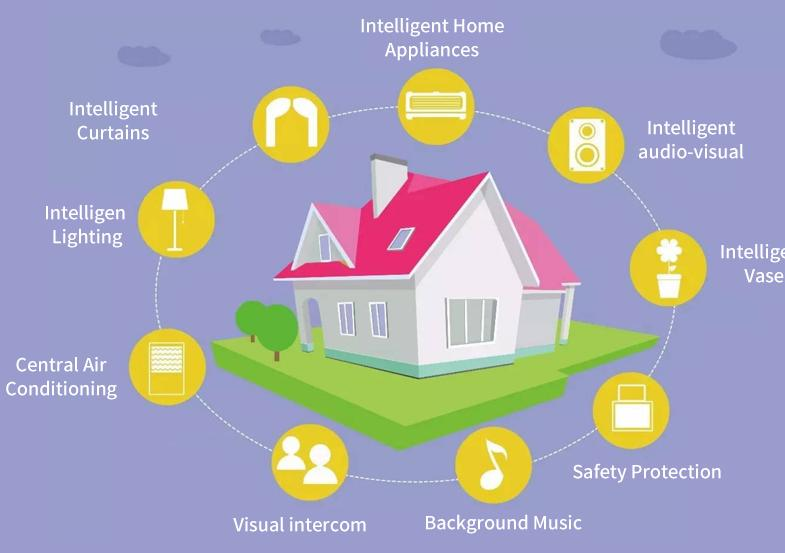
Smart agriculture: In the perception layer, various sensors (such as soil moisture sensors, climate sensors, etc.) and devices (such as drones, agricultural robots, etc.) collect farmland information. The network layer transfers data to the data layer. The data layer processes and analyzes the collected data, such as predicting climate change and assessing crop growth status. The application layer provides a user interface, such as computer software, allowing farmers to view agricultural information and analyze results. The business layer is responsible for integrating various functions, such as farmland management, crop management, equipment management, etc.
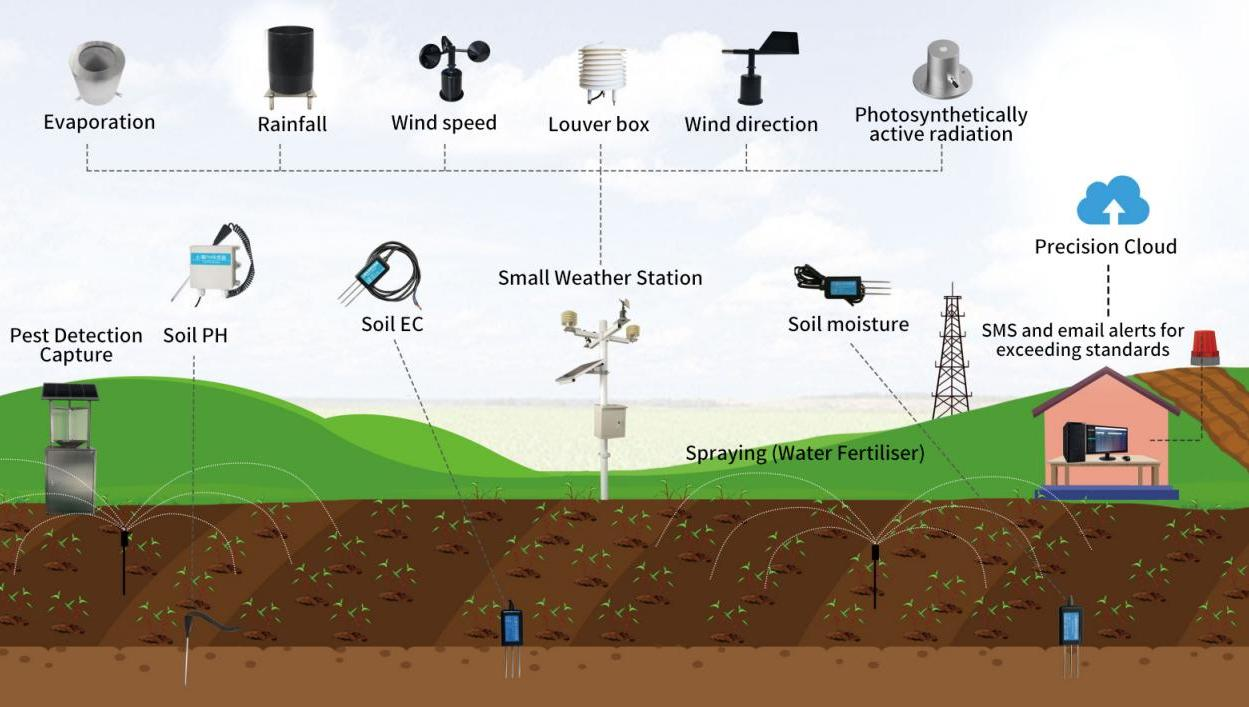
Smart transportation: In the perception layer, various sensors (such as speed sensors, traffic signal sensors, etc.) and devices (such as cars, traffic lights, etc.) collect traffic information. The network layer transfers data to the data layer. The data layer processes and analyzes the collected data, such as predicting traffic congestion and planning the best route. The application layer provides a user interface, such as an in car navigation system, allowing drivers to view traffic information and navigation routes. The business layer is responsible
for integrating various functions, such as traffic management, route planning, safety management, etc.
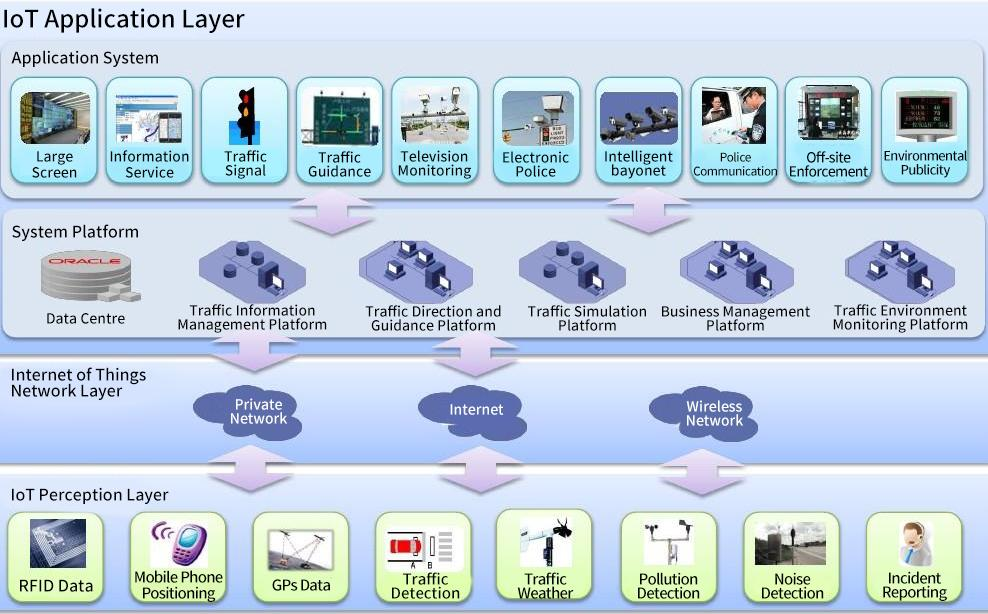
Summarize
The architecture of the Internet of Things provides us with a comprehensive framework for understanding and designing IoT systems. Each layer has its unique functions and responsibilities, together forming a complete Internet of Things system. With the continuous development and application of Internet of Things technology, we believe that the Internet of Things will play an increasingly important role in future life, bringing more convenience and fun to our lives.